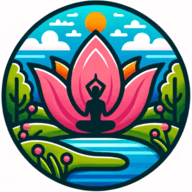Yoga, an ancient practice, has evolved over centuries, and so have the methods of teaching it. This blog post delves into the diverse methodologies of yoga teaching, offering a comprehensive understanding of this dynamic field. We will explore traditional and modern techniques, the role of technology, and the importance of personalization in yoga instruction.
Traditional Yoga Teaching Methods
Yoga, with its roots in ancient India, has been passed down through generations using traditional teaching methods. These methods emphasize the guru-disciple relationship, where knowledge flows from the experienced teacher to the eager student.
In this model, the guru imparts not just the physical postures or asanas but also the philosophical and ethical aspects of yoga. The student learns through observation, practice, and direct instruction. This method fosters a deep, personal connection between the teacher and student, enhancing the learning experience.
However, traditional methods are not without their challenges. They require a significant time commitment from both parties and may not be feasible in today's fast-paced world. Moreover, the one-on-one nature of this approach limits the number of students a teacher can effectively instruct.
Modern Yoga Teaching Techniques
As yoga gained popularity worldwide, teaching methods evolved to cater to larger groups and diverse audiences. Modern yoga teaching techniques focus on making yoga accessible and enjoyable to all.
In a typical yoga class, the instructor demonstrates the asanas, guides students through the sequences, and provides adjustments as needed. This method allows for efficient instruction of larger groups, making yoga more widely available.
Modern techniques also incorporate elements like music, props, and themed classes to make the sessions more engaging. However, these methods may not delve as deeply into the philosophical aspects of yoga as traditional methods do.
The Role of Technology in Yoga Teaching
Technology has revolutionized many fields, and yoga teaching is no exception. Online platforms and apps have made yoga instruction accessible to people worldwide, regardless of geographical constraints.
Live-streamed classes, pre-recorded sessions, and interactive apps allow students to practice yoga at their convenience. These platforms often offer a variety of styles, levels, and durations, catering to a wide range of preferences.
While technology has made yoga more accessible, it also presents challenges. The lack of personal interaction can make it difficult for instructors to provide adjustments and ensure correct posture. Moreover, the onus of maintaining discipline and regularity falls entirely on the student.
Personalization in Yoga Teaching
Every individual is unique, and so are their yoga needs. Personalization in yoga teaching acknowledges this fact and tailors the instruction to suit the individual's abilities, goals, and preferences.
Personalized yoga instruction can involve one-on-one sessions, customized class sequences, or modifications in asanas. This approach can be particularly beneficial for individuals with specific needs, such as pregnant women, seniors, or people with health conditions.
However, personalization requires a deep understanding of yoga and the individual's needs. It also demands a higher level of commitment from the teacher, making it a more resource-intensive method.
The Future of Yoga Teaching
As we look ahead, the future of yoga teaching appears to be a blend of traditional and modern methods, enhanced by technology and personalized to the individual's needs.
Virtual reality (VR) and augmented reality (AR) technologies hold promise for creating immersive yoga experiences. Artificial intelligence (AI) could enable more personalized and adaptive yoga instruction. At the same time, there is a growing recognition of the value of traditional methods and the depth they bring to the practice.
The future of yoga teaching, thus, lies in embracing diversity and flexibility in methods, while staying true to the essence of yoga.
The Importance of Continuous Learning for Yoga Teachers
Regardless of the methods they use, effective yoga teachers are lifelong learners. They continuously update their knowledge and skills, adapting to the evolving needs of their students and the changing landscape of yoga teaching.
Continuous learning can involve formal training, self-study, attending workshops, or learning from other teachers. It also involves introspection and personal practice, as yoga teachers must embody the principles they teach.
In the dynamic field of yoga teaching, continuous learning is not just a necessity but a commitment to the teacher's own growth and the quality of instruction they provide.
Embracing Diversity in Yoga Teaching Methodologies
The world of yoga teaching is as diverse and dynamic as the practice itself. From traditional guru-disciple methods to modern group classes, from technology-enabled platforms to personalized instruction, each method has its strengths and challenges. As yoga teachers, embracing this diversity and continuously learning can help us provide effective, engaging, and meaningful instruction to our students.

